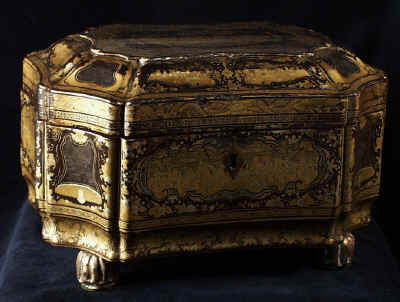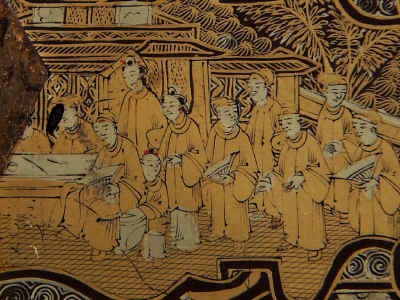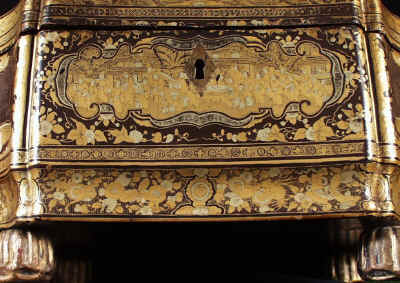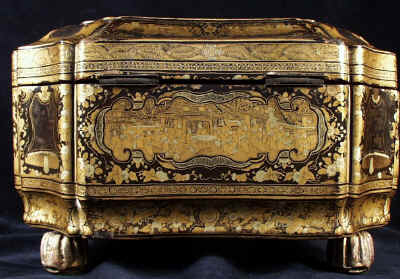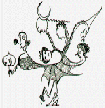 |
ANTIQUE BOXES
at the Sign of the Hygra 2 Middleton Road London E8 4BL Tel: 00 44 (0)20 7254 7074 email: boxes@hygra.com |
1760 -1900 by ANTIGONE Tea Caddies and Tea |
| Tea Caddies and Tea |
Home |
Contents |
Up |
Thumbs |
| Tea caddy
in Chinese lacquer
in very good original condition. The black lacquer is decorated
with gold in two colors. In addition the canted corners feature
bell shaped ornaments in silver/grey suggesting the metal nature of
bells. The decoration is of fine quality and
the complex shape exceptionally good. It stands on four
carved wooden feet in the shape of semi open flowers. The interior
contains a pewter tea canister with round raised
lid.
Chinese made for export to England circa 1830 . Dimensions: 9.25" wide 6.4" deep 5.8" tall (on feet) |
|
| On the concave base there is a wealth of Chinese symbols.
In the center there is a "golden coin", one of the eight
treasures. Smaller motifs of this nature are scattered throughout
and are also seen in simpler form on the line above the base. This
is suggestive of successful trading and consistent with negotiating
tea selling.
On the right hand side there is a very distinctive creature, the three legged Toad, the Moon creature. Legends abound concerning this peculiar animal; during an eclipse, the Toad was supposed to swallow the moon. The most obvious allusion on this box is perhaps the Toad's symbolism as a money making talisman. This creature is also associated with marriage, the bridal bed referred to as the Toad Palace, so perhaps this box was made as a wedding gift. |
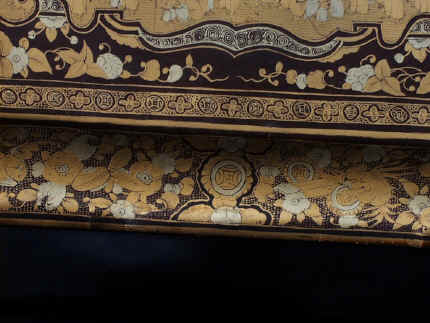 |
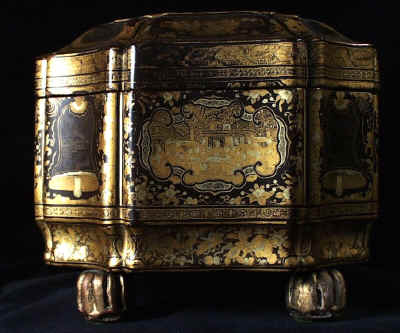 |
|
| Detail showing the Toad and coin. Also a kind of pot sometimes depicted in Chinese art under the Money Tree. | 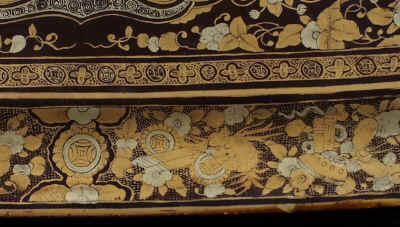 |
 |
|
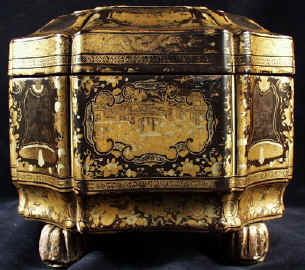 |
The side of the box. The gold is worn where the box was handled when opened. |
|
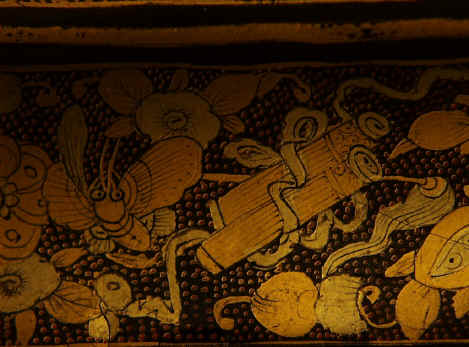 |
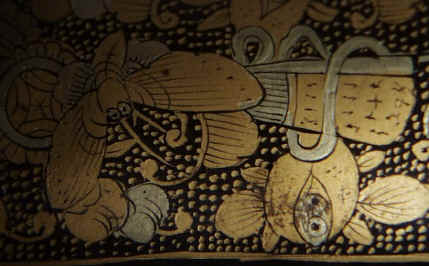 |
|
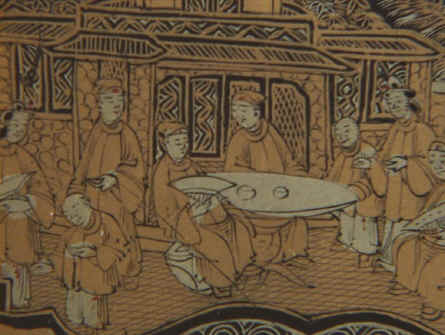 |
|
| The top is a little rubbed but the scene is still recognizable. | 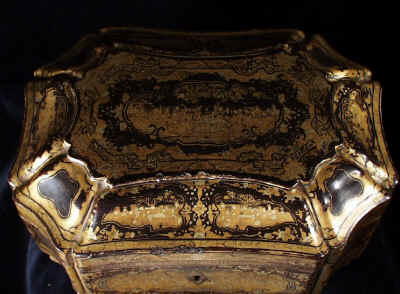 |
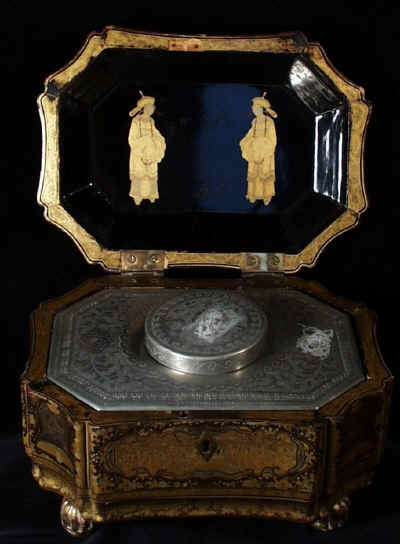 |
|
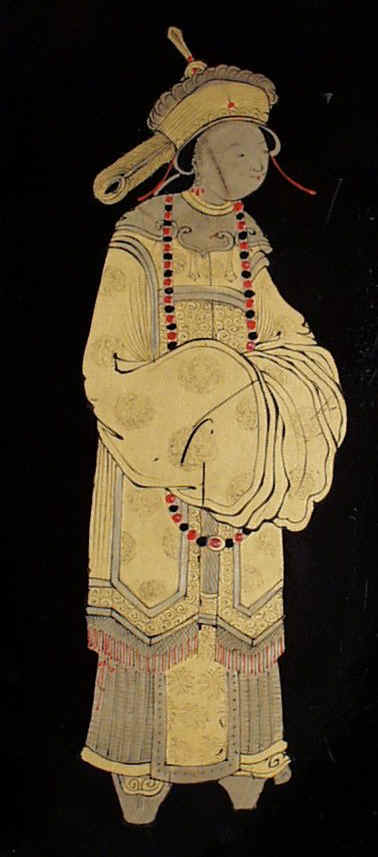 |
|
| There is a metal container for keeping the tea. This is decorated with engraved flora and motifs. | 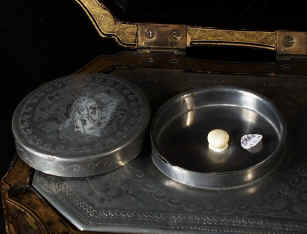 |
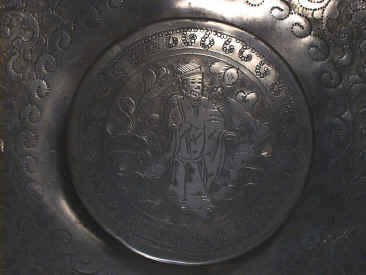 |
|
| The sides are decorated with bells in silver/grey
suggesting the metal nature of such objects. The decoration is in
simple black lines, reminiscent of early woodcuts, and portray buildings
used for the gathering of tea and scenes of its transportation by
boat.
Bells were used by heralds to convene assemblies. The word for bell is "zhong" which is a homophone with "to bring something off". On this piece the bell would refer to the negotiations of the tea trading. |
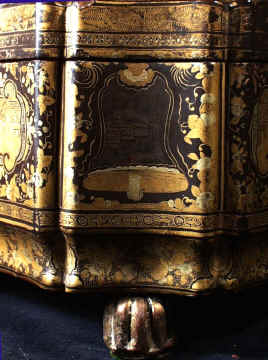 |
